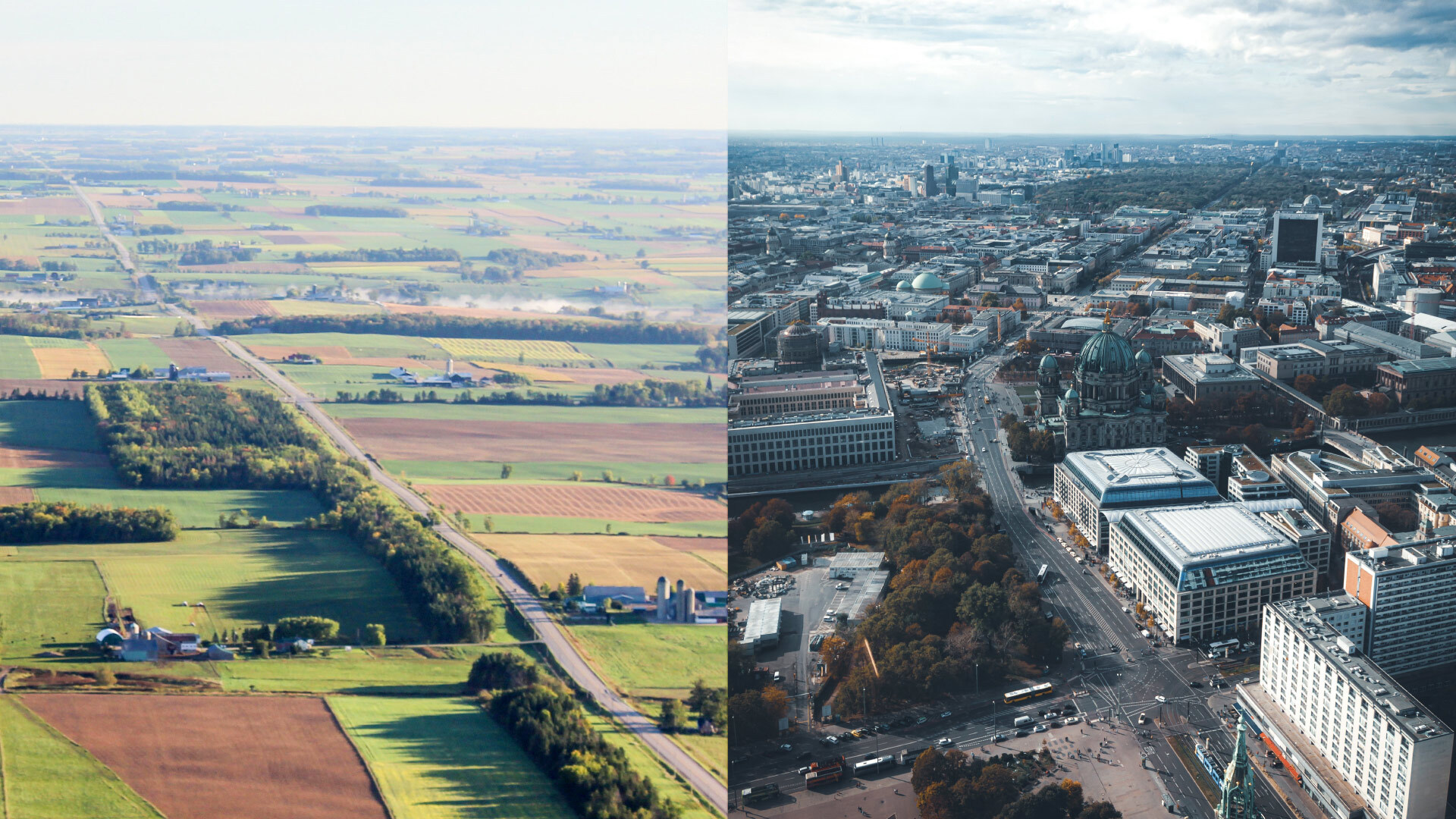Making sense of an economic crisis spurred by an ever-evolving pandemic is a big task, but international organizations have been tracking shifts in employment to get a sense of the uncertainty. The data reveals that pandemic-induced economic instability may be deepening pre-existing inequalities between urban and rural places.
How 2020 is different from 2008
The pandemic economy is playing out very differently from the 2008 financial crisis, when the reduced demand for labor led to high rates of unemployment. Since the first wave of lockdowns in 2020, many workers found themselves still technically employed but working far fewer hours, if any. Thanks to employment retention schemes in some countries, many jobs have been preserved, even if there’s not enough work to go around.
So the usual metrics for measuring economic crisis impact, like unemployment rates, fall short in the pandemic. Analyzing the impact in terms of reduced work hours helps us better understand how the economic impact varies by place.
Many people who lost their jobs in the early months of the pandemic couldn’t search for new ones due to public health restrictions and lack of labor demand as many businesses closed. Under normal circumstances, these people likely would have stayed in the labor force. By comparison, during the 2008 crisis, the number of hours worked actually increased globally by 0.2% as workers tried to make up for income losses.
In 2020, the biggest decreases in hours worked occurred in high-income countries. In some places, governments introduced employment retention schemes to prevent layoffs or imposed temporary bans on redundancies. But these policies have also increased the number of people who are working shorter hours or who have been furloughed.
Working hour shortfall by region, 2020 to 2021
Source: International Labor Organization
Total working hours worldwide dropped by 8.8% in 2020. In the first and second quarters of 2021, they dropped by 4.1% and 4.4% as compared to a no-pandemic scenario. Though there’s been significant progress since 2020, working hour losses have remained persistently high this year. As 2021 winds down, it’s clear the crisis is not yet over.
Urban exodus: rural opportunity?
Highly skilled workers who are able to work remotely have been less vulnerable to job losses. Many have the means to leave expensive, dense urban areas for suburbia, small towns or rural settings. Three-quarters of workers surveyed by the ADP Research Institute have changed or plan to change their living arrangements as a result of the pandemic.
The OECD found that the opportunity to work remotely varies widely by country and whether a job’s location is urban, rural or in-between. For OECD countries overall, the share of urban jobs that can be done remotely is 42%, while just 34% of jobs in towns and 31% of rural jobs can be done remotely.
The opportunity to work remotely varies by location
Source: OECD
In 2020, London’s population shrank for the first time in more than three decades. Part of this drop has been attributed to people leaving for more affordable housing in other areas of the country. But part has been the result of many non-U.K. nationals losing work opportunities and returning to their home countries — a trend that began with the Brexit vote in 2016 and was compounded by the uncertainty of the pandemic.
As some high-skilled workers moved out of the crowded cities hit early by the virus, such as New York City, the pandemic worsened in rural areas where many people have less access to healthcare and financial support. The OECD points out that rural populations tend to skew older, and insufficient internet infrastructure may have led to more in-person meetings. For example, meatpacking plants in rural areas became Covid-19 hot spots in Germany, Ireland and the United States.
Risks in the informal economy
While tracking changes in labor income, hours worked and overall employment, the International Labor Organization (ILO) found that people living in rural areas were generally less affected than those in urban areas. The below infographics show how work decreased in urban and rural places in Peru and Brazil between the first and second quarters of 2020, and in Vietnam between the second quarters of 2019 and 2020:
Working changes in urban vs. rural places
Declines in labor income
Declines in hours worked
Declines in employment
Source: International Labor Organization
For many informal workers, who have no work-based social protection, the loss of income without a financial cushion has been devastating. Worldwide, 80% of people living in rural places and 44% of people living in urban areas are working in the informal economy. In developing countries, the informal economy accounts for 90% of rural jobs and 79% of urban jobs, the ILO reports.
Tourism: both a risk and a lifeline
While cities have experienced large drops in tourism since 2020, some mountain and lake regions within driving distance of large cities received more visitors than usual. Some countries such as Norway implemented temporary tourism bans to protect rural populations and their health systems.
But the loss of tourism revenue has been especially hard on rural parts of Canada. Consultancy McKinsey notes that while urban areas were hardest-hit in the first half of 2020, this year, rural communities in the U.S. have borne the brunt of Covid-19 infections and deaths. Rural counties that are home to at least 33% people of color have experienced 1.6 times more Covid-19 deaths per capita than other rural counties.
The path forward
The sharp drop in economic activity that corresponded with each lockdown has exacerbated already precarious labor situations. While recovery measures have helped and will encourage more people to re-enter the labor force, the lack of available jobs will likely increase unemployment rates.
The global unemployment rate, according to the ILO, is projected to settle at 5.7% in 2022 — better than during the height of the pandemic, but still substantially higher than before. Economists anticipate the global economy to partly rebound in 2021 and 2022. But it is not likely to be strong enough to fill the gap caused by the crisis, particularly in hard-hit sectors like tourism and accommodation.
Global unemployment as a share of the total labor force
Source: World Bank
In many ways, the pandemic has been a perfect storm that amplified existing inequalities, further stressing rural places that have struggled to find their footing after the 2008 financial crisis. To be successful, any government recovery initiatives will have to address these pre-existing disparities instead of assuming that the solutions for urban economies will work in rural economies.
Read more
Sign up to keep up to date with ReThink Q.







